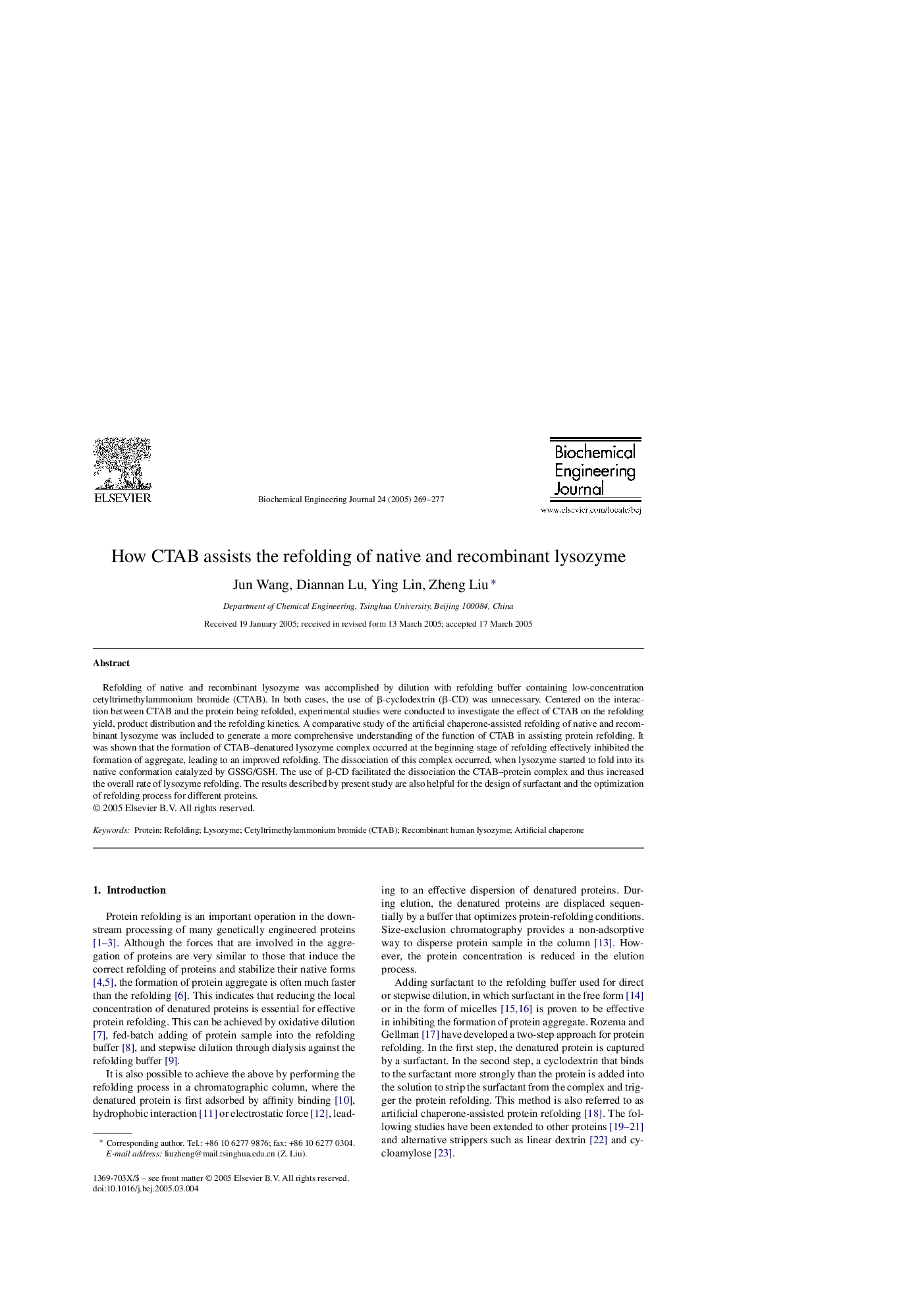| Article ID | Journal | Published Year | Pages | File Type |
|---|---|---|---|---|
| 10160850 | Biochemical Engineering Journal | 2005 | 9 Pages |
Abstract
Refolding of native and recombinant lysozyme was accomplished by dilution with refolding buffer containing low-concentration cetyltrimethylammonium bromide (CTAB). In both cases, the use of β-cyclodextrin (β-CD) was unnecessary. Centered on the interaction between CTAB and the protein being refolded, experimental studies were conducted to investigate the effect of CTAB on the refolding yield, product distribution and the refolding kinetics. A comparative study of the artificial chaperone-assisted refolding of native and recombinant lysozyme was included to generate a more comprehensive understanding of the function of CTAB in assisting protein refolding. It was shown that the formation of CTAB-denatured lysozyme complex occurred at the beginning stage of refolding effectively inhibited the formation of aggregate, leading to an improved refolding. The dissociation of this complex occurred, when lysozyme started to fold into its native conformation catalyzed by GSSG/GSH. The use of β-CD facilitated the dissociation the CTAB-protein complex and thus increased the overall rate of lysozyme refolding. The results described by present study are also helpful for the design of surfactant and the optimization of refolding process for different proteins.
Keywords
Related Topics
Physical Sciences and Engineering
Chemical Engineering
Bioengineering
Authors
Jun Wang, Diannan Lu, Ying Lin, Zheng Liu,
